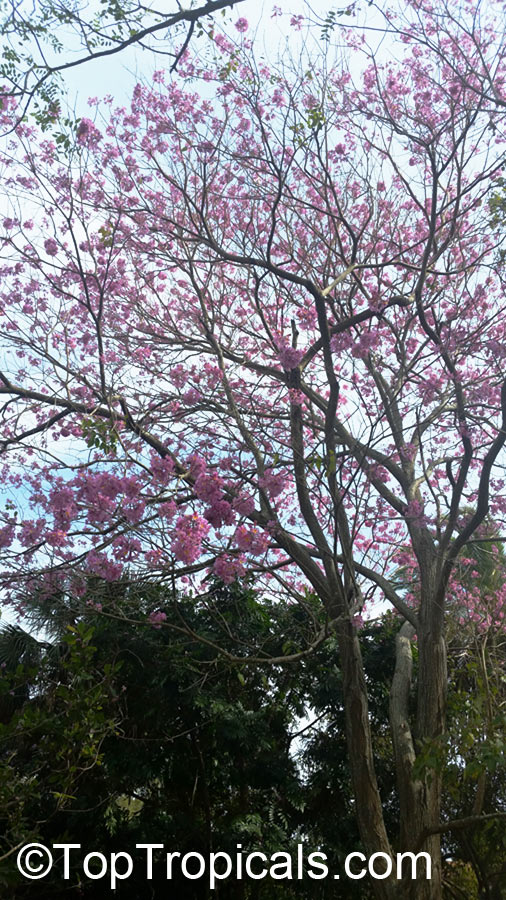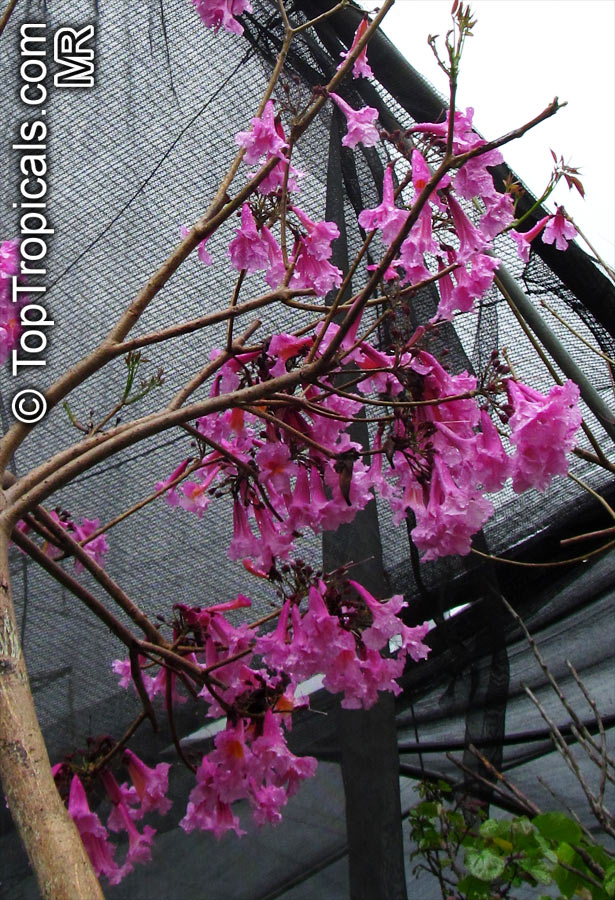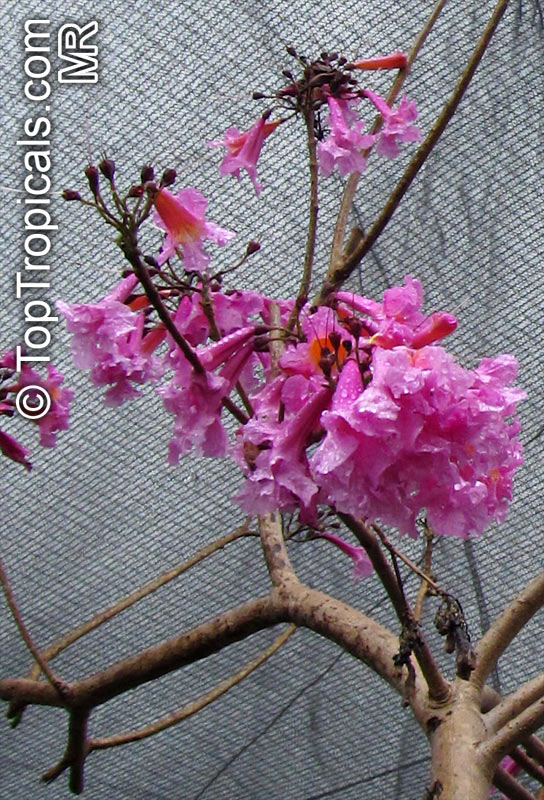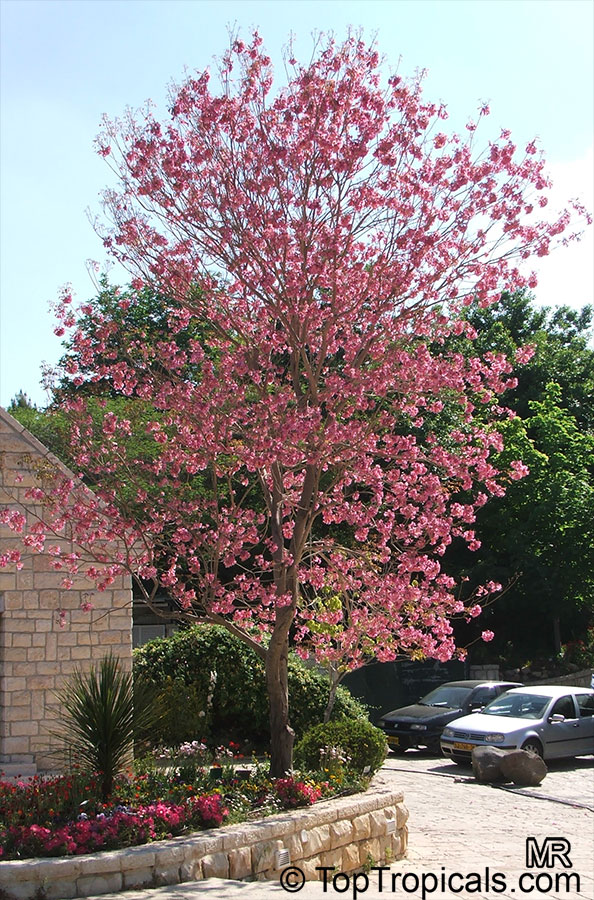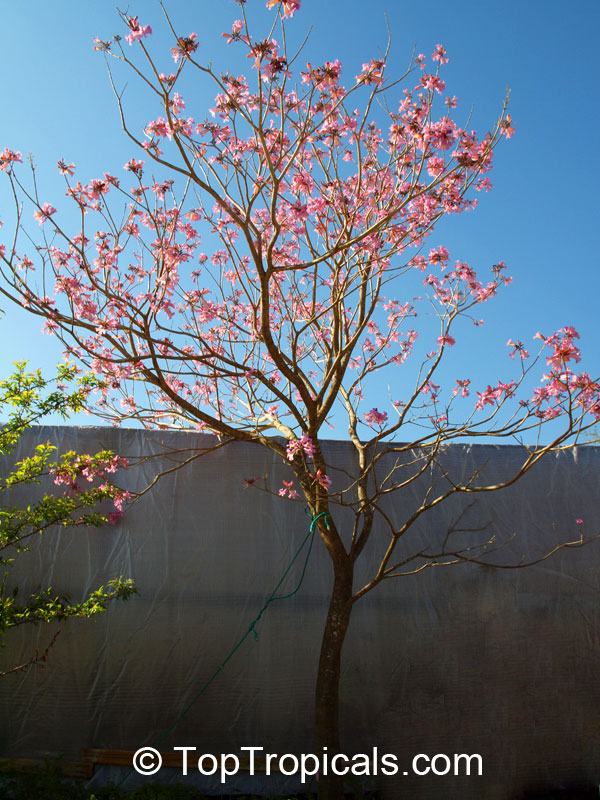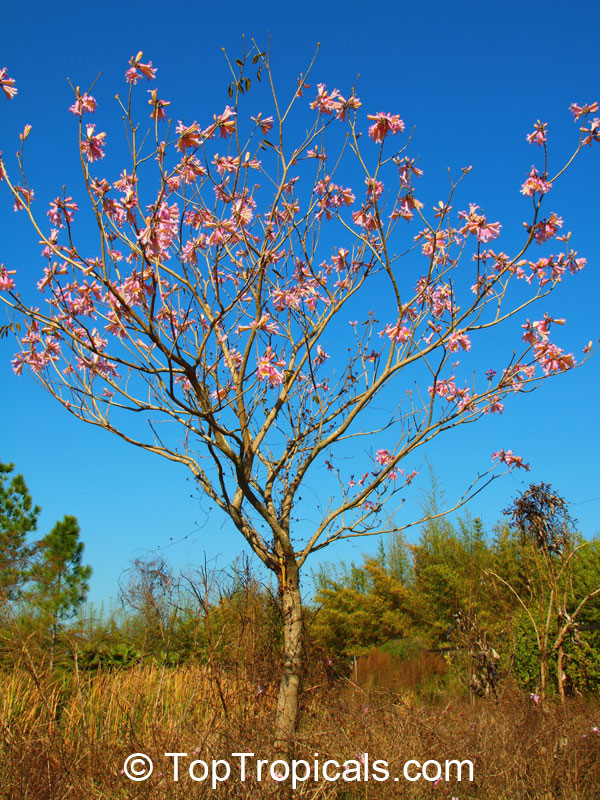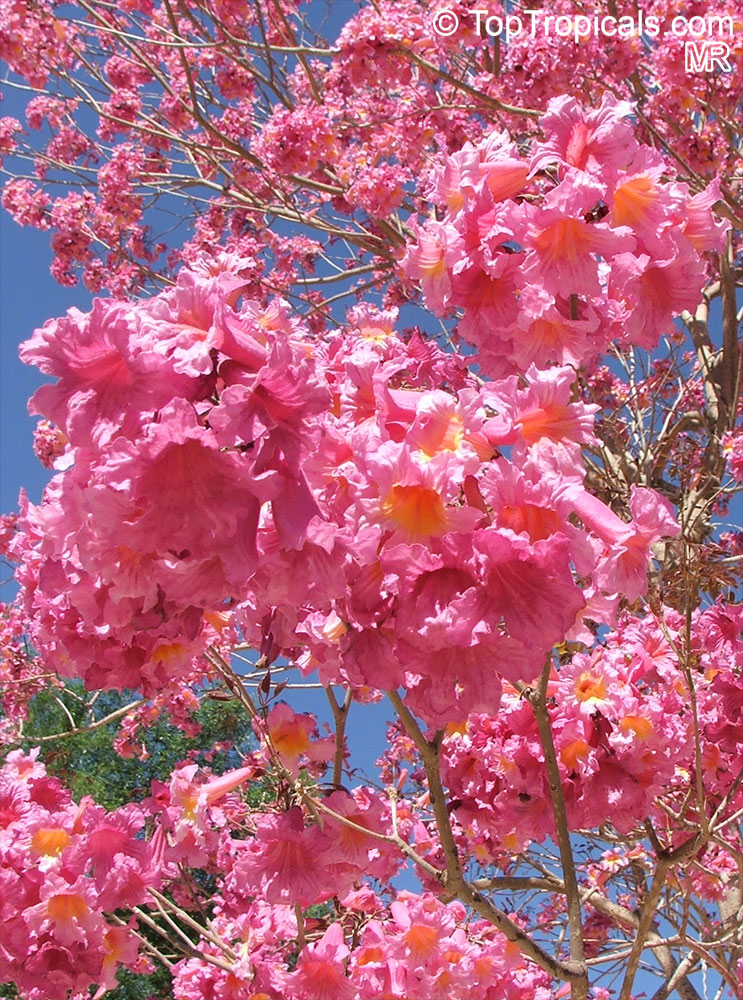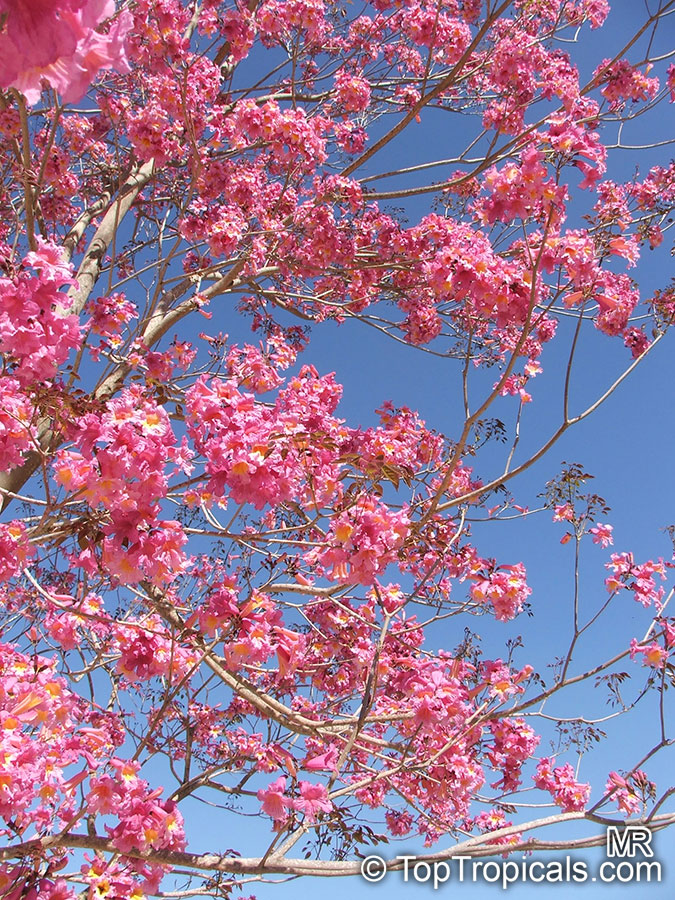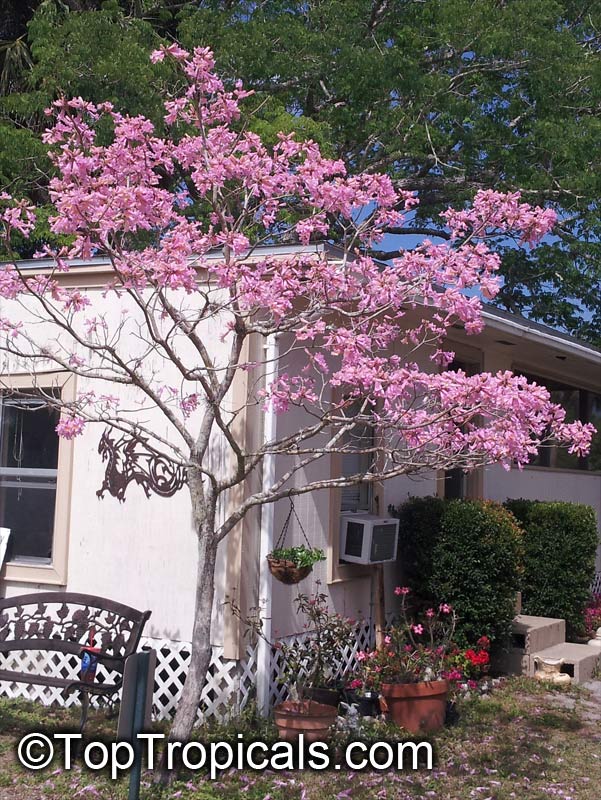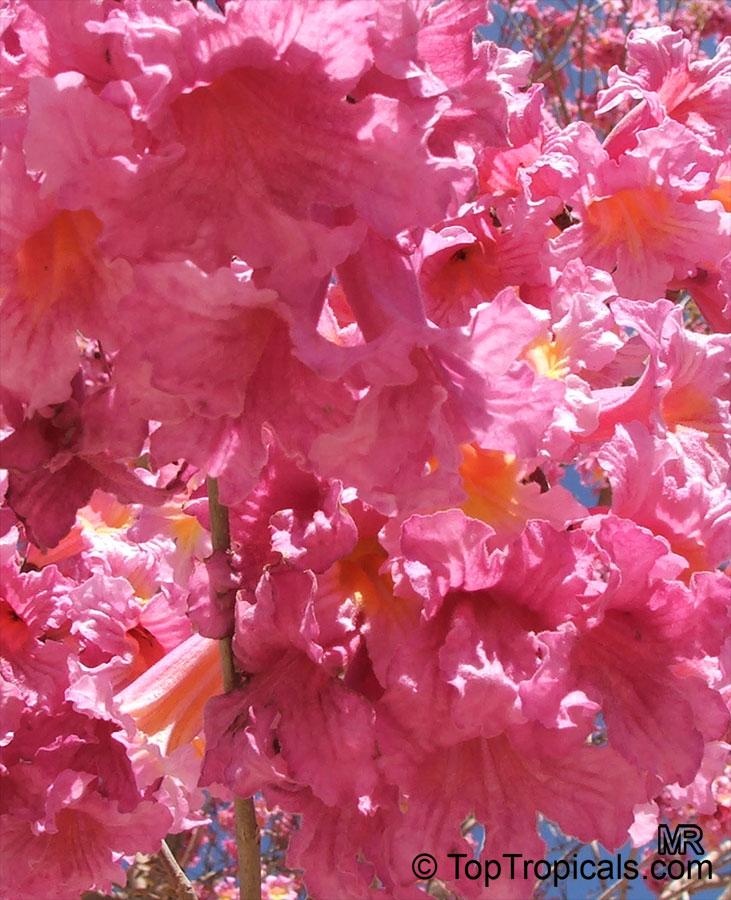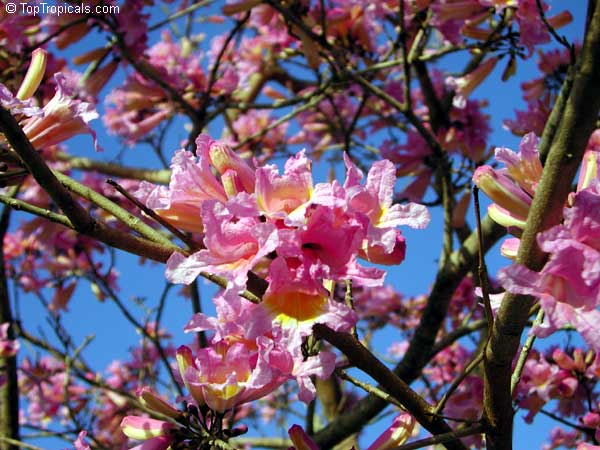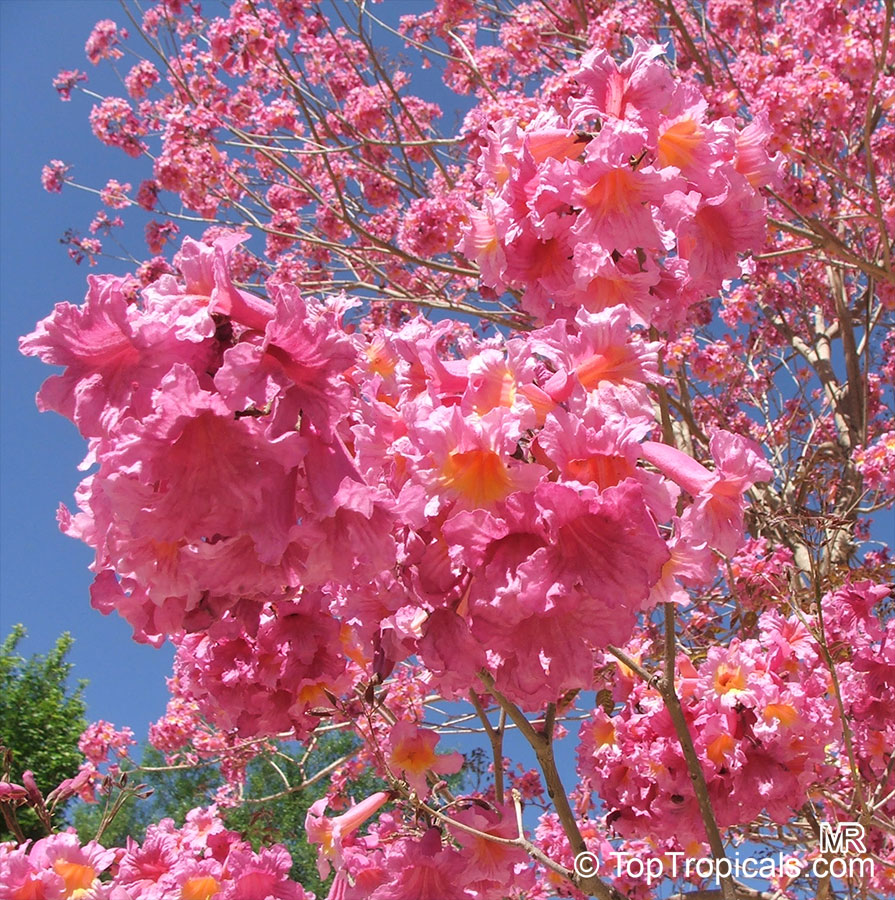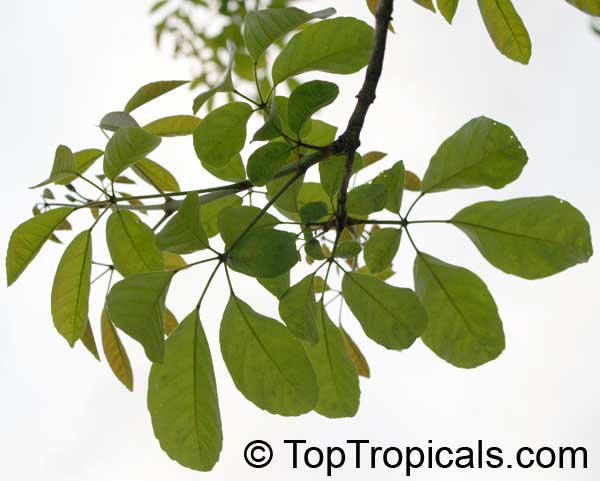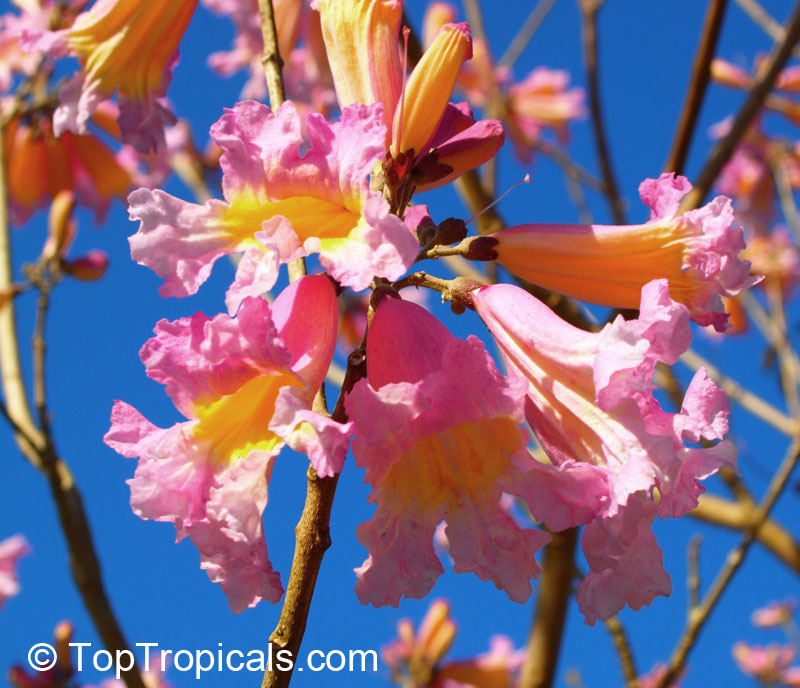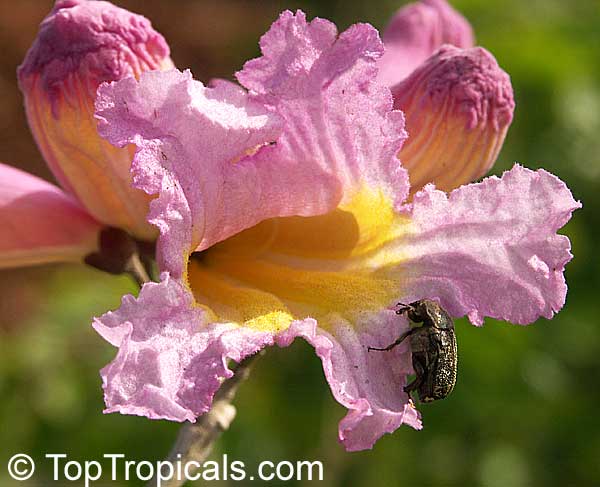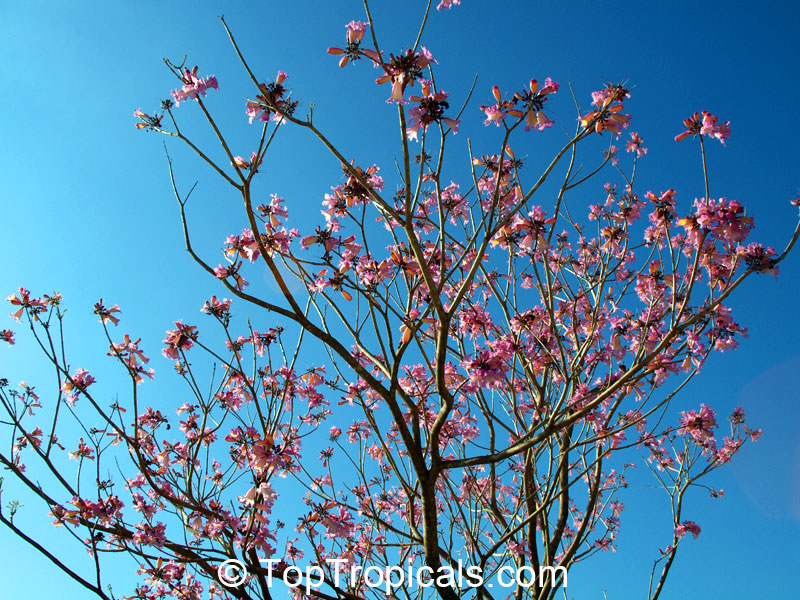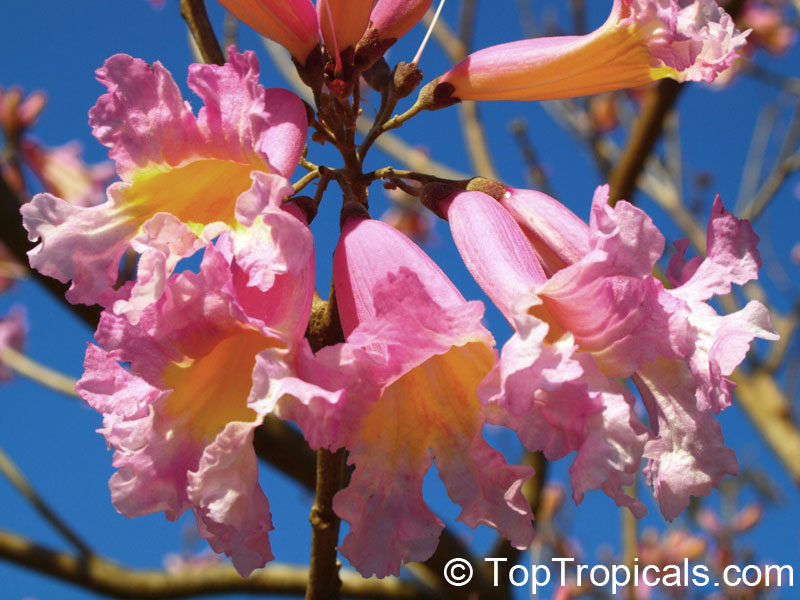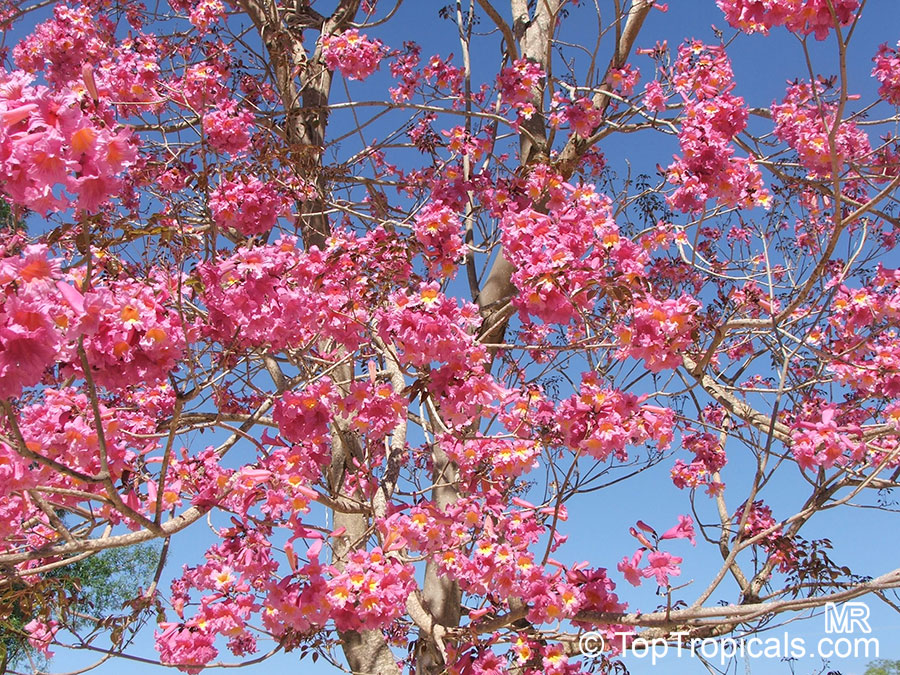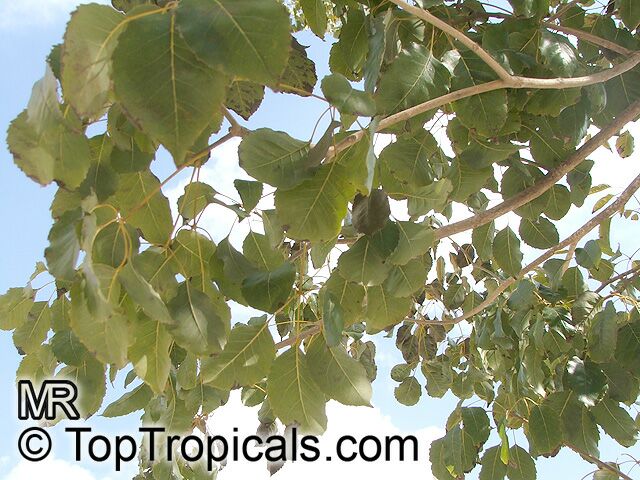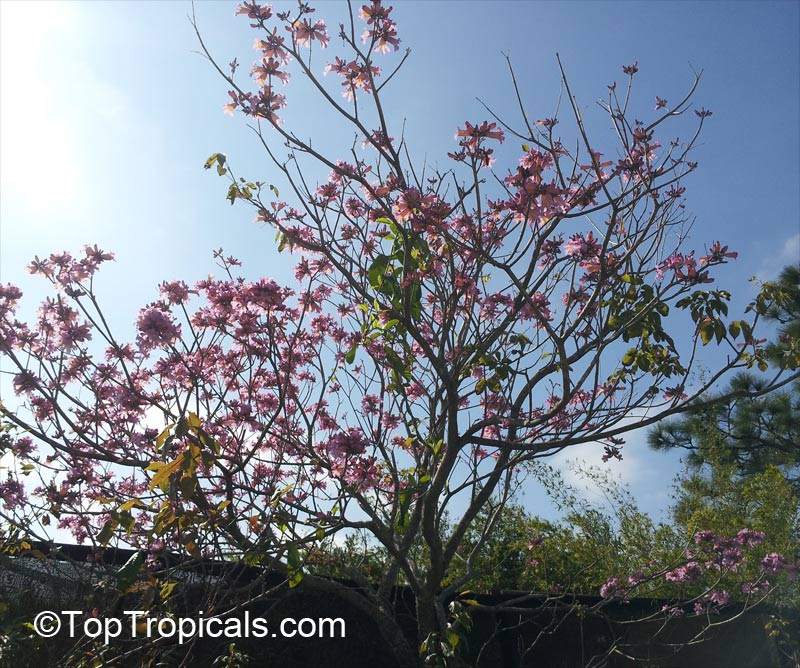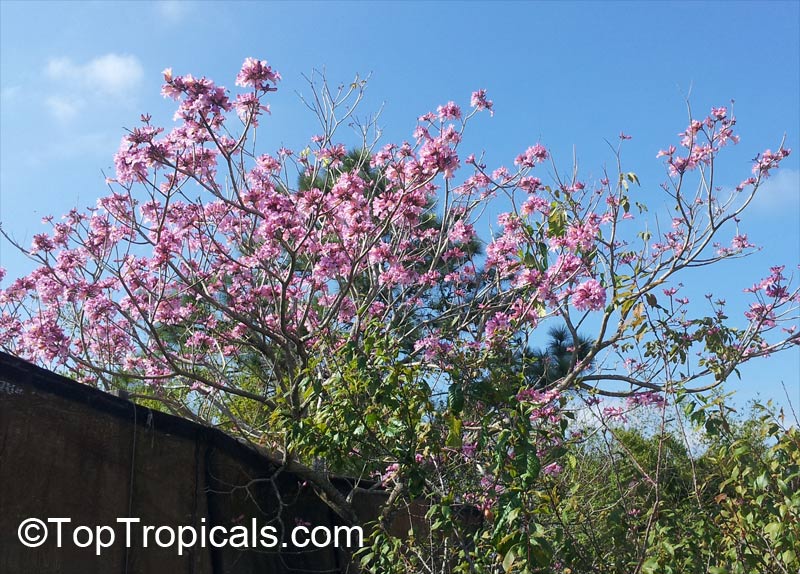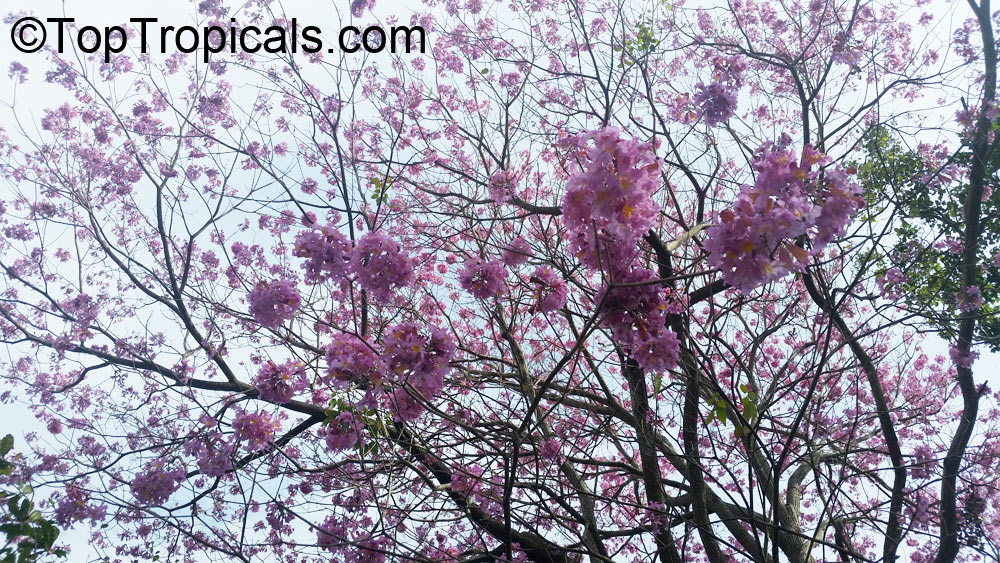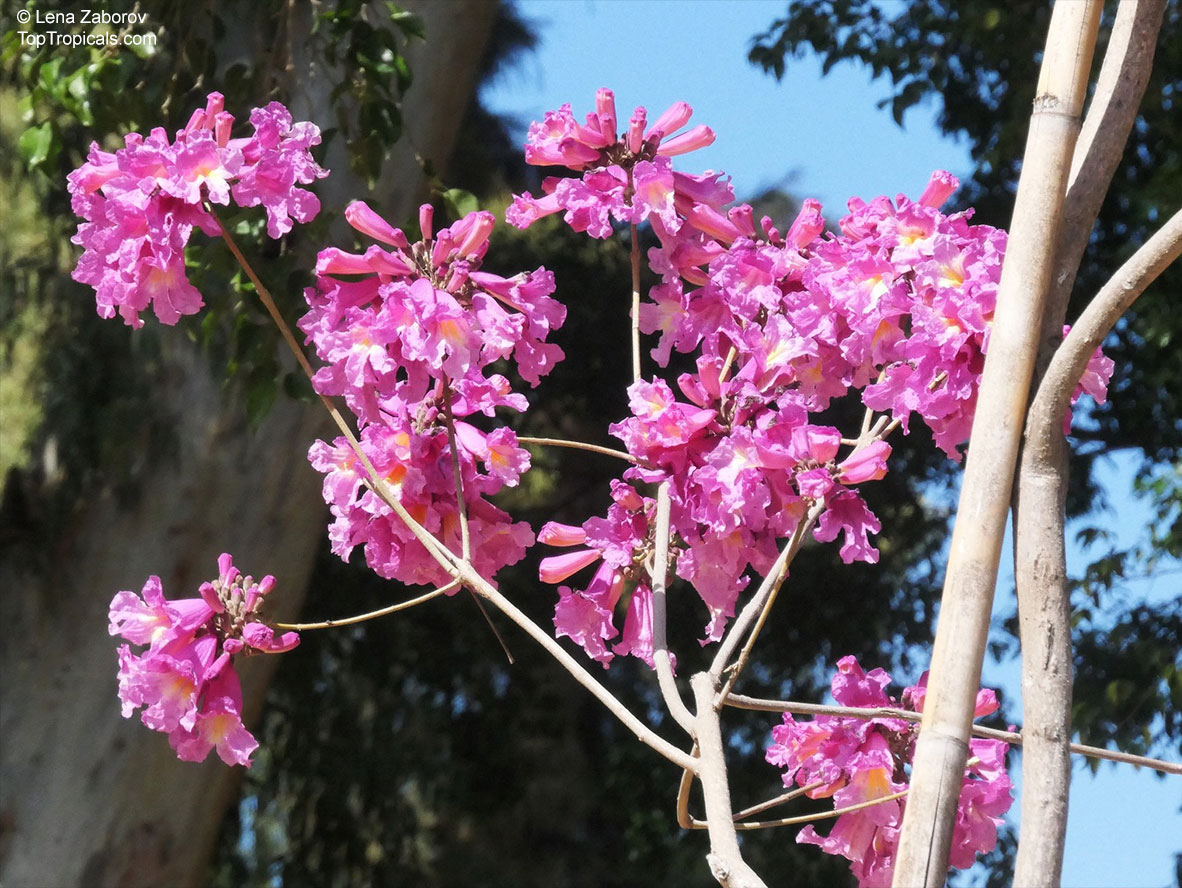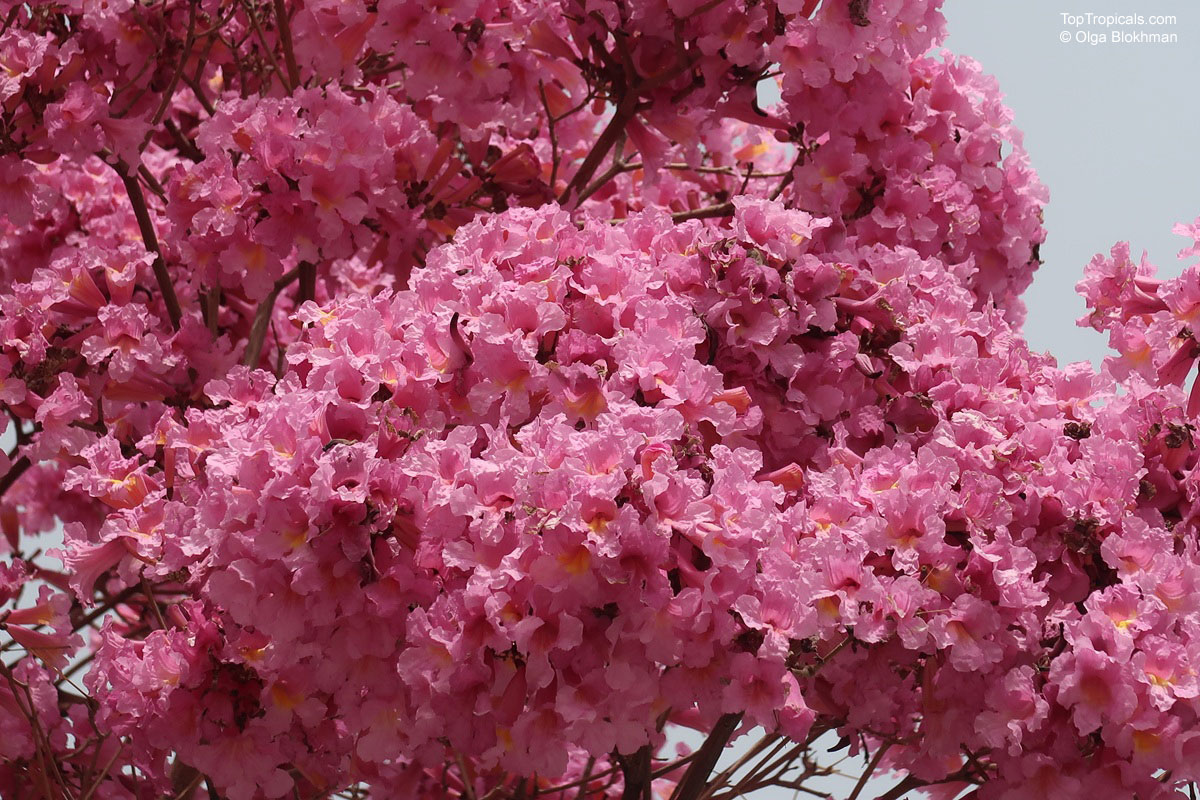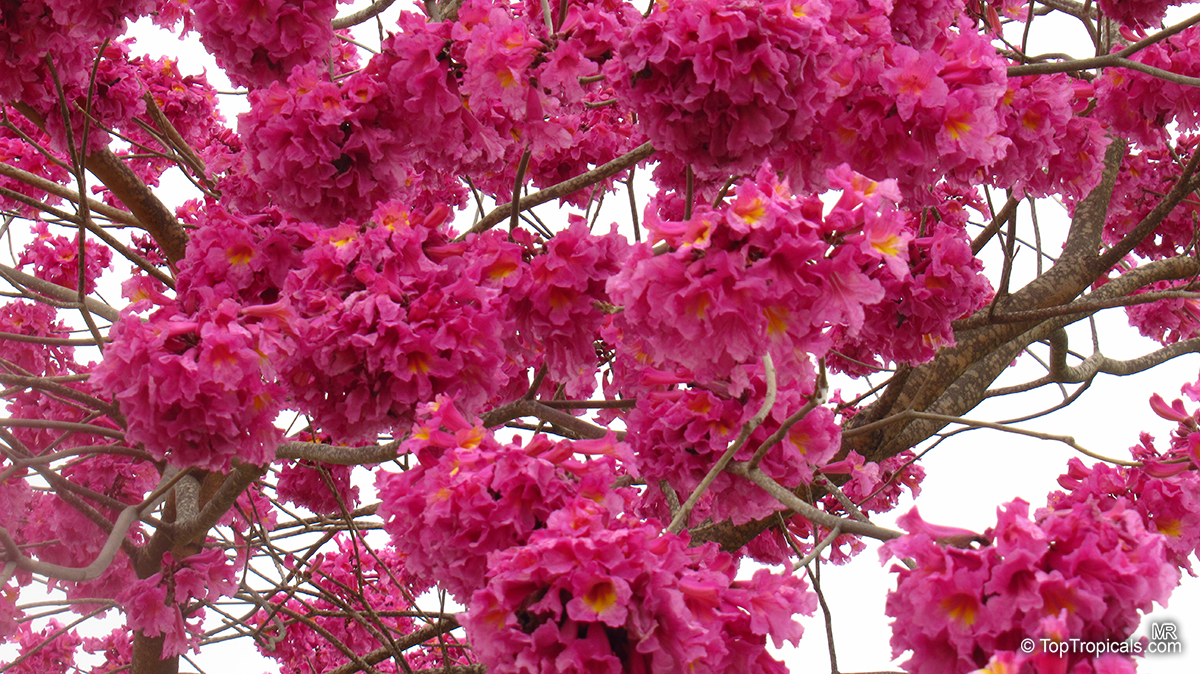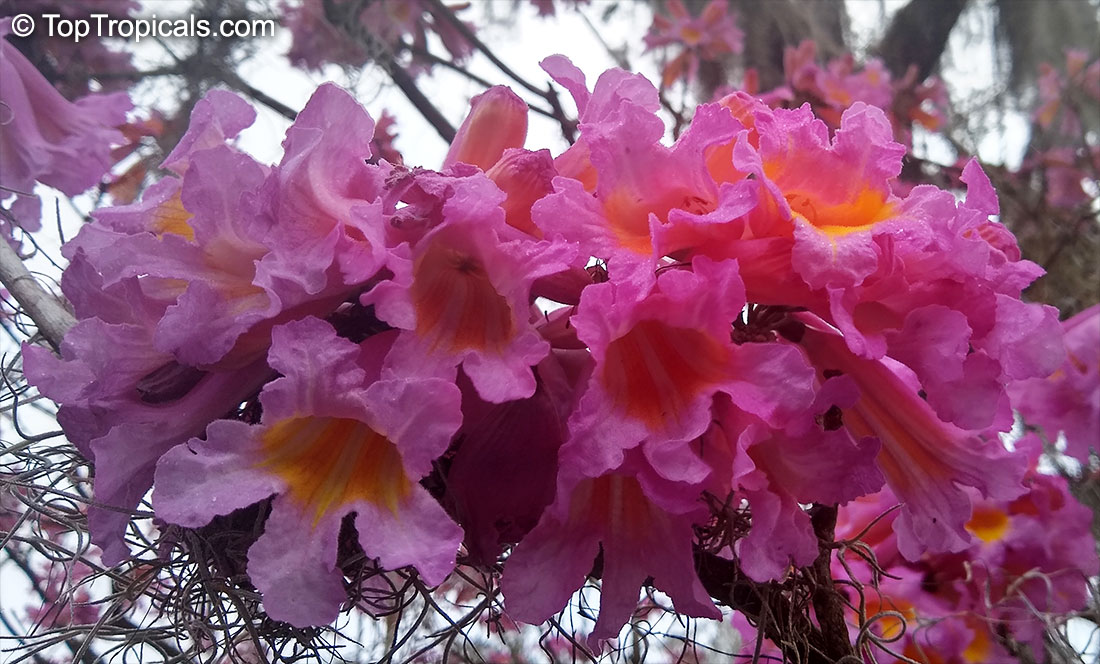Tabebuia impetiginosa (Pink Tabebuia)
Top Tropicals Plant Encyclopedia
Tabebuia impetiginosa
Botanical names: Tabebuia impetiginosa, Handroanthus heptaphyllus, Handroanthus impetiginosus, Tabebuia avellanedae
Common names: Pink Tabebuia, Ant Wood, Pau DArco, Ipe Roxo, Lapacho, Taheebo
Family: Bignoniaceae
Origin: Tropical America
Hardiness: 30°F









Tabebuia impetiginosa Dwarf Pink Tabebuia is a deciduous tree that can reach a height of 10-20 ft in native conditions can be much taller. It grows best in full sun and requires little care, needing only a moderate amount of regular water once established. This attractive species is often planted in wa
Similar plants: Tabebuia impetiginosa (Pink Tabebuia)
- Handroanthus chrysotrichus (Dwarf Golden Tabebuia)
- Tabebuia alba (Lapacho Amarillo)
- Tabebuia angustata (Roble Blanco)
- Tabebuia bahamensis (Dwarf Bahamian Trumpet Tree)
- Tabebuia caraiba (Silver Trumpet Tree)
- Tabebuia haemantha (Blood-Red Trumpet Tree)
- Tabebuia heterophylla (Pink Trumpet Tree)
- Tabebuia riparia (White Tabebuia)
- Tabebuia rosea (Rosy Trumpet Tree)
- Tabebuia roseoalba (White Trumpet tree)
Link to this plant:
https://toptropicals.com/catalog/uid/tabebuia_impetiginosa.htm
Pau DArco, Taheebo, Dwarf Pink Tabebuia. Looking for... more
Grown in
10"/3 gal pot, large plant
7 Plants in stock
$49.95
This item is certified for shipping to all states/territories, including Puerto Rico (with phytocertificate), US VI (with phytocertificate), Louisiana, Texas, California (with phytocertificate).
Pau DArco, Taheebo, Dwarf Pink Tabebuia. Looking for... more
Grown in
14"/7 gal pot, large plant
4 Plants in stock
$79.95
This item is certified for shipping to all states/territories, including Puerto Rico (with phytocertificate), US VI (with phytocertificate), Louisiana, Texas.
